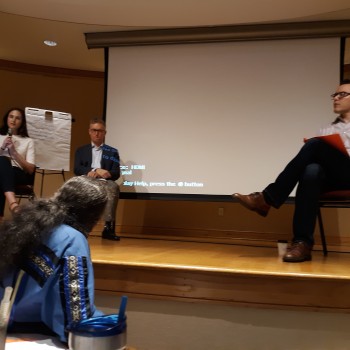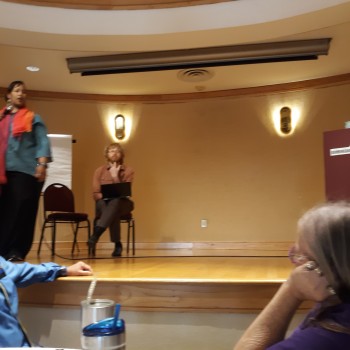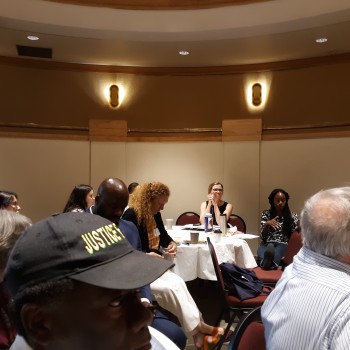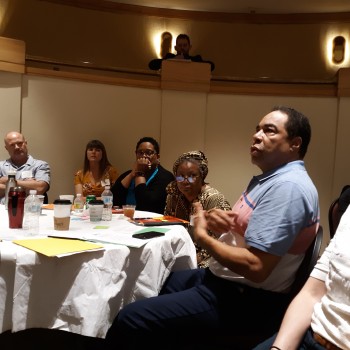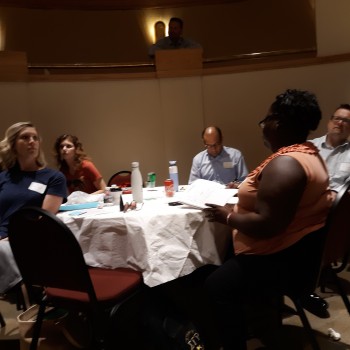SCEN Meeting in Birmingham, Alabama
South Carolina Solar Council presents an award to: The Whitney M Slater foundation of 2019 Community Solar Champion-Public Education of the Year Award.
Congratulations to The Whitney M Slater foundation on winning the 2019 South Carolina Solar Council Community Solar Champion-Public Education of the Year Award.
Duke Energy Dedicates Nichols Solar Farm to Whitney M. Slater Foundation
Duke Energy dedicates Nichols solar farm to Whitney M. Slater Foundation
NICHOLS, S.C. — Duke Energy and Pine Gate Renewables held a ribbon cutting two weeks ago in Nichols on a shared solar farm that will serve low-income residents in Dillon County. The Shared Solar Program launched in July. PGR is a developer, owner and operator of utility-scale solar farms based in Charlotte.
The South will Rise Again
The South will rise again. This phrase resonated throughout the southern region of the United States after the defeat of the Confederacy. Well, the South has risen again, but not as the denizens of white supremacy foresaw. The South rose again under the leadership of Americans like the Reverend Martin Luther King, Jr., who made the promised potentiality of democracy more accessible to those who had been excluded. This was the civil rights movement.
 In the 1980s and 1990s, the South rose again. This time when people who were the victims of environmental racism and practices sited polluting facilities in poor and people of color communities. These courageous efforts become the environmental justice movement, which spread across the United States and the world. Even the United States government started with Executive Order 12898 and President Clinton acknowledged the disparities in health, death, and economically devastated communities. The U.S. Environmental Protection Agency established an Office of Environmental Justice. An Inter-Agencey Working Group, made up of all federal agencies was created to ensure that states and the federal government addressed and remedied issues that led to environmental injustice that impacted people of color, low income communities, environmentally overburdened communities, vulnerable communities, and tribes. Now the Trump administration and its proposed cuts threaten to not only roll back the clock but also to increase the millions of people threatened by death, disease, and increased weather-related disasters due to pollution and climate change.
In the 1980s and 1990s, the South rose again. This time when people who were the victims of environmental racism and practices sited polluting facilities in poor and people of color communities. These courageous efforts become the environmental justice movement, which spread across the United States and the world. Even the United States government started with Executive Order 12898 and President Clinton acknowledged the disparities in health, death, and economically devastated communities. The U.S. Environmental Protection Agency established an Office of Environmental Justice. An Inter-Agencey Working Group, made up of all federal agencies was created to ensure that states and the federal government addressed and remedied issues that led to environmental injustice that impacted people of color, low income communities, environmentally overburdened communities, vulnerable communities, and tribes. Now the Trump administration and its proposed cuts threaten to not only roll back the clock but also to increase the millions of people threatened by death, disease, and increased weather-related disasters due to pollution and climate change.
Why is the South rising again? There are more polluting facilities in the South than anywhere else in the nation. Persistent poverty, high unemployment, the scarcity of jobs paying a living wage and access to affordable health care looms as one of the greatest threats in over fifty years.
 Across the South, everyday people and the leaders of grassroots community-based environmental justice organizations mobilized to join the Peoples Climate March on April 29th in Washington DC. Most of these organizations were led by people of color. A group calling itself the Southeast Coalition had groups coming from Florida, Georgia, Mississippi, South Carolina, North Carolina, and Virginia. The Coalition is made up of state-wide networks in each of those states representing scores of environmental justices in the south.
Across the South, everyday people and the leaders of grassroots community-based environmental justice organizations mobilized to join the Peoples Climate March on April 29th in Washington DC. Most of these organizations were led by people of color. A group calling itself the Southeast Coalition had groups coming from Florida, Georgia, Mississippi, South Carolina, North Carolina, and Virginia. The Coalition is made up of state-wide networks in each of those states representing scores of environmental justices in the south.
“Our aim,” said The Reverend Leo Woodberry of Florence, South Carolina, “is to ensure that the issues impacting the people most affected by climate change are lifted up and addressed. Generally, when one hears the words climate change images of polar bears and melting glaciers are conjured up. We insist on putting a face to the problem because no matter where you go on this planet, the people most adversely impacted by climate change are overwhelmingly black and brown”.
The Southeast Coalition has already begun implementing a multi-state strategy around renewable energy, community education, organizing and activism. Despite what may be perceived as a downturn in the policies related to environmental justice and climate change, the Coalition is committed to ensuring that the South as well as the United States and the world rises again.
Why We Need to Talk About Energy and Equity Together
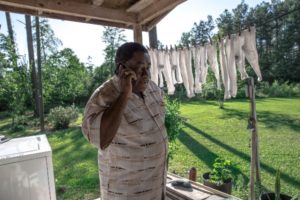
As we swing into Fall and welcome a change of season, I’m reminded that October marks Energy Awareness Month. This change of seasons can also mean increased penny pinching and hardship in my community. It’s an opportune time to talk about how we all — our government, state officials and local communities — can get better about managing energy resources and help struggling families out. For me, it’s also a necessary moment to emphasize the need to provide accessible, sustainable and equitable energy resources for everyone, particularly low-income families.
Originally, I grew up in New York City, but I spent my summers with family in rural Marion County, in Britton’s Neck, South Carolina. This area is as much a part of me as New York is. It’s where I have roots and is my family, my community and my home. The story of my own community that follows is a prime example of why we need to focus on smart ways to support equitable solutions
Located in northeast South Carolina, Marion County has a long, rich history. At first glance, you quickly pick up on its agricultural past. Remnants of tobacco fields still linger and rural schoolhouses sprinkle the countryside. Yet, despite Marion’s abundant farmland, the last thirty years have brought dramatic changes to the residents of my county.
Back in the 1980s, Marion County was booming with a newly revitalized economy. Residents worked in everything from textile to candy production. People had good jobs, were purchasing homes for the first time and buying cars — perhaps even two cars. Quality of life was on an upswing for residents and their families.
However, that all changed on January 1st, 1994. This marked the first day the NAFTA Trade Agreement went into effect. The very same manufacturing businesses that rejuvenated the county back in the ’80s left, abandoning their factory plants and building new ones abroad. This devastated Marion County.
The real tragedy? No new industry took its place.
Now, people can no longer rely on a salary and must depend on hourly, minimum wages. During peak tourist months — from sun up till sundown — Marion residents rely on hotel cleaning jobs in nearby Myrtle Beach, about a 35 mile ride away. They try to save as much money as possible over the summer months, but it just isn’t enough. When the season changes, they can’t find proper employment and many go into severe debt. My beloved Marion County has become one of the most impoverished counties with the highest unemployment rate in South Carolina. And this is having grave effects on the future of this area and its residents.
There is a continued “making do and bust” culture evolving — where we try to make the best of our living conditions, even though the system has set us up to fail. And to make matters worse, our climate has shifted as well. To put it simply, it’s too hot. We experience more rain and flooding than ever before and it’s destroying whatever agriculture industry we have left. If we don’t find good low-cost ways to use and provide energy more efficiently, we will eventually all be affected.

Residents from Marion County, SC — pictured (top to bottom): Calvin Woodberry and sister, Mamie Robinson; Harry and Helen Hemingway; and Helene Gause and her grandkids.
But I am hopeful. Yes, I am. Already, South Carolina is building crucial public/private partnerships that are getting good work done, but they need to be expanded. Programs like Help my House, where rural electric cooperatives — through on-bill financing — work with low-income households and make improvements that dramatically lower energy bills. This helps bring residents out of debt and provides more comfortable and sustainable living conditions. I think South Carolina can lead the way in how we create new jobs, improve living conditions and tackle climate change, while at the same time, transform how we treat our fellow community members. We all need to understand what’s at stake, as a country, not only in terms of helping families make ends meet, but in terms of a changing climate that could harm our communities in long and lasting ways.




